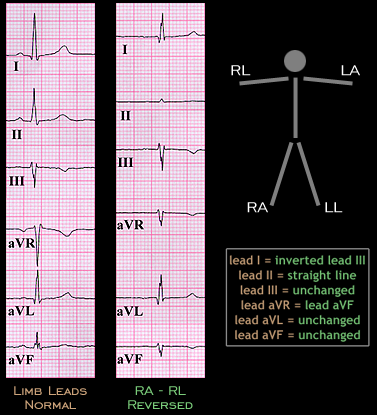
Now, the right arm and right leg leads have been reversed. Lead I is now recorded between the right leg (negative) and left arm (positive) and is therefore an inverted lead III. Lead II is now recorded between the right leg (negative) and the left leg (positive) and creates a straight line because the information recorded from both legs is the same and the signals are cancelled. It is as if the two leg electrodes were placed on the same limb. Lead III is unchanged. Leads aVR and aVF are identical since they are essentially being recorded from the same location and lead aVL is unchanged.
